Masonic Regalia International: A Practical Guide to Types, Quality, Buying, Care, and Authenticity is more than a title. It is an entire topic that answers the question why regalia is important for each Mason on the planet. Regalia speaks of rank, history, and ceremony.
Regalia is also a market reaching across continents with numerous suppliers, collectors, and traditions. In this article, you will discover the various types of regalia, how they are produced, how to authenticate, where to purchase, and how to maintain them.
Why Regalia Matters Internationally

Regalia is more than clothing. It is a visible sign of membership, honor, and duty. Each apron, sash, or collar carries meaning. When worn, they connect members to traditions that go back centuries.
Internationally, regalia plays an important role. Different countries have unique designs and customs, yet all share the same symbolic purpose. Whether in London, New York, or Latin America, regalia shows respect for rituals and history.
Glossary of Common Terms
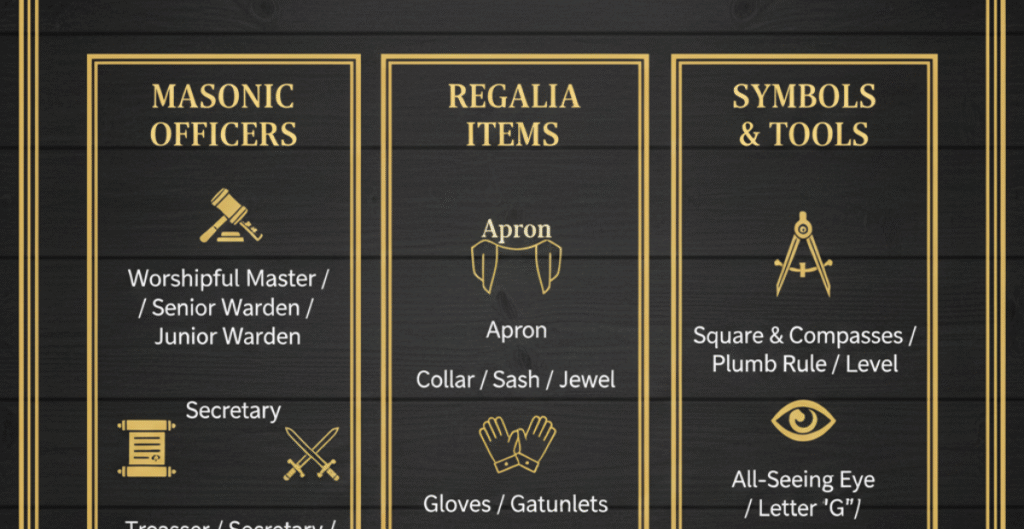
To understand Masonic Regalia International, you must know the main terms. An apron is the most recognized item, often white or decorated with symbols. A sash is worn over the shoulder to show degree or office. A collar holds a jewel, which is a badge of office. Gloves represent purity, while wands and rods are carried by officers.
A jewel is not always a gem. It is often a medal that shows the role of the wearer. Each term is used worldwide but may look slightly different depending on the lodge.
SEE MORE: The Complete Guide to D. Sonny Drew Masonic Regalia
History and Symbolism
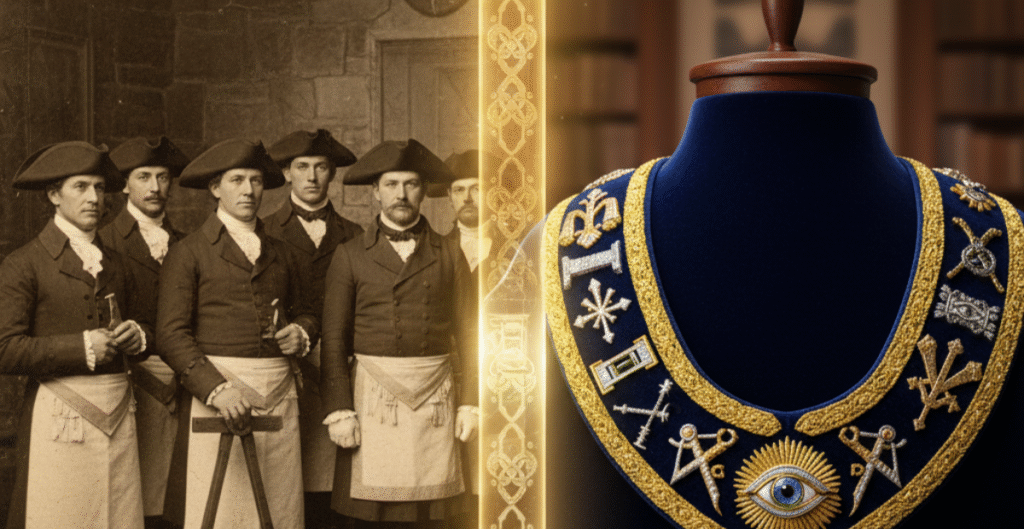
Regalia became formal in the eighteenth century when lodges began to organize globally. Early aprons were plain, made from lambskin, but soon decorations were added. Symbols like the square and compass appeared, showing the identity of the order.
The symbolism remains the same. Regalia marks progress in degrees and duties in the lodge. For members, wearing regalia is both an honor and a responsibility.
Types of Regalia
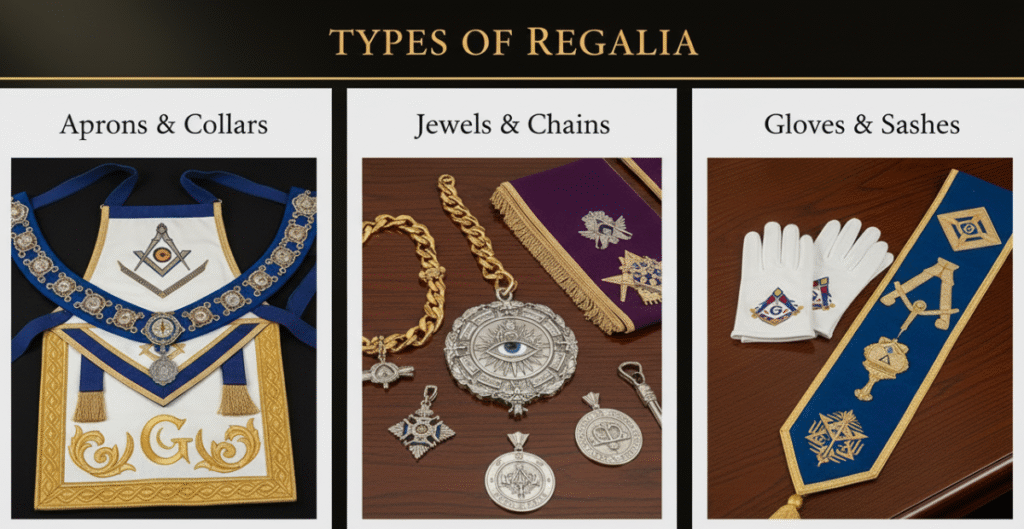
There are many types of regalia, and each has a function. The apron is the most central piece. Gloves, collars, and sashes add to the uniform of the lodge officer. Badges and jewels identify specific offices such as Master or Treasurer.
Banners and cases also count as regalia. They are used in ceremonies and to preserve items. Each type has meaning, and no piece is worn without reason.
Common Masonic Regalia and Their Use
| Item | Function | Typical User | Notes |
| Apron | Main badge of Mason | All members | Degree decides design |
| Collar | Holds jewel of office | Officers | Ornate in higher lodges |
| Gloves | Symbol of purity | All members | Usually white cotton/leather |
| Jewel | Badge of specific office | Officers | Often engraved or enameled |
| Sash | Marks degree or chapter | Higher ranks | Often silk or velvet |
Materials and Craftsmanship
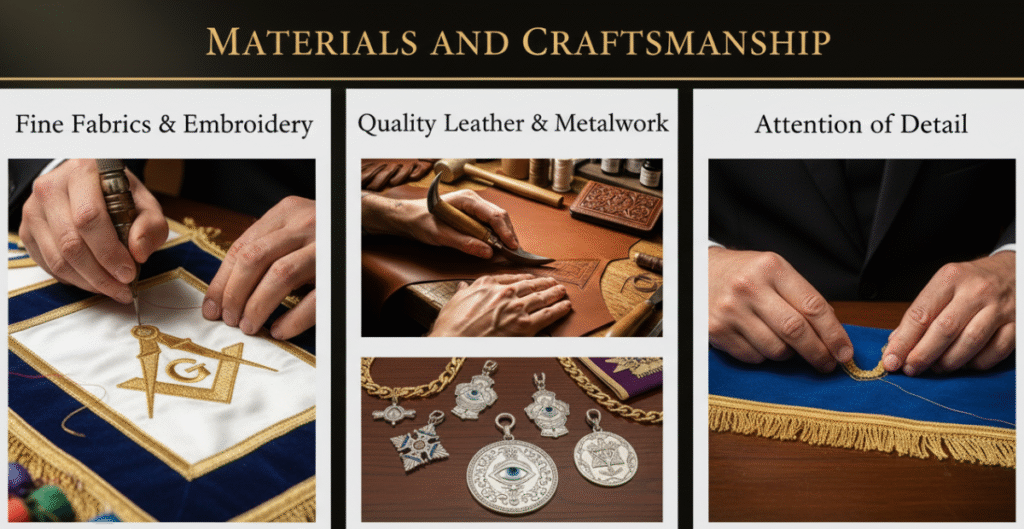
Materials show the quality of regalia. Traditional aprons use lambskin leather with silk borders. Collars may use velvet or satin with embroidery. Bullion thread, made from real metal wire, adds shine and weight.
Craftsmanship separates authentic regalia from cheap copies. Hand stitching, detailed embroidery, and hallmarks of the maker all prove value. Poor stitching, plastic materials, or faded printing are signs of low quality.
International Variations
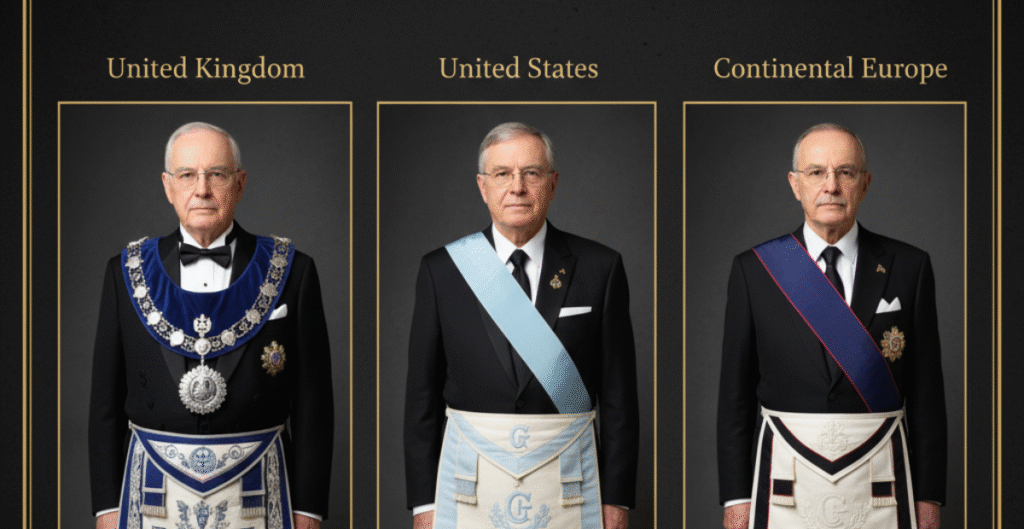
Regalia changes by region. In the United Kingdom, aprons are often made with bullion and show heraldic designs. North America uses brighter colors and mass-produced versions but still follows degree rules.
In Europe, designs may use enamel and ornate metal work. In Latin America, local materials and styles are common. In Asia and Africa, regalia often blends imported and local designs.
Sizing and Fit
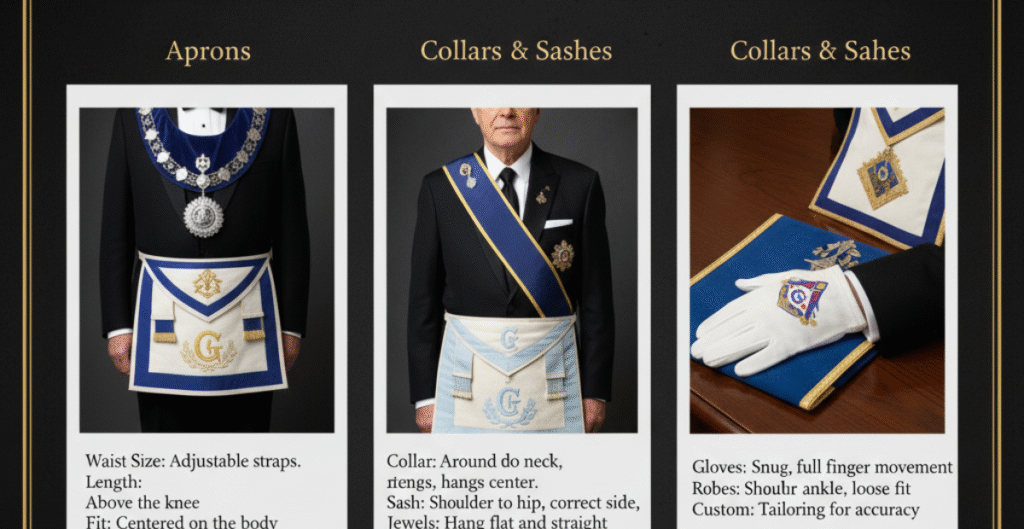
Correct sizing matters. An apron should sit neatly at the waist and cover the front. A collar must rest comfortably on the shoulders, not too loose or tight. Gloves must fit without wrinkles, allowing easy movement of the hands.
Measurements should be taken carefully. Aprons vary in flap size by degree. Collars and sashes often need specific measurements. Buying internationally requires checking the seller’s sizing chart.
Leading Suppliers and Makers
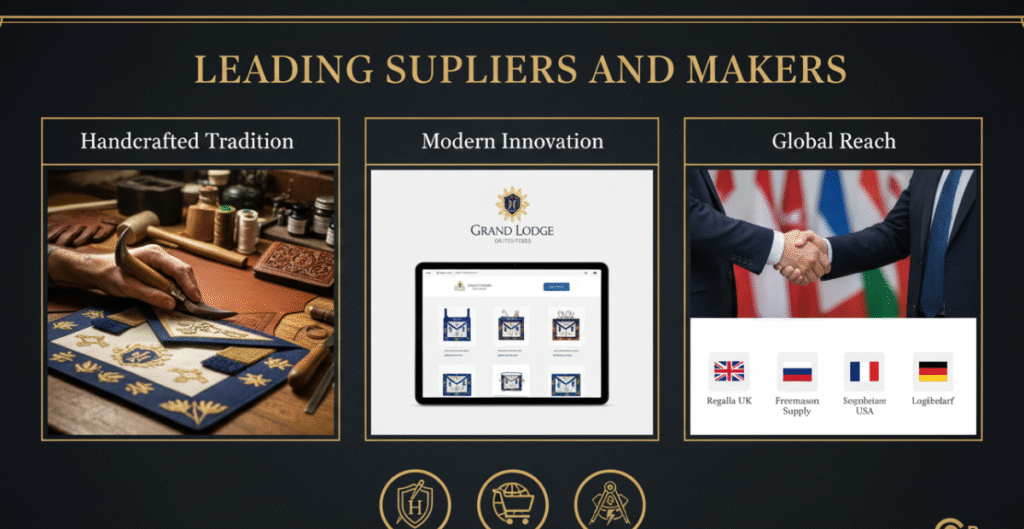
Some suppliers are centuries old, known for fine regalia. In England, bespoke firms still serve lodges with handmade aprons. In the United States, large suppliers serve many Grand Lodges with custom orders.
When buying internationally, check the supplier’s reputation. Look for maker marks, client lists, and sample images. Trusted firms offer warranties and detailed descriptions of materials.
Authenticity and Red Flags
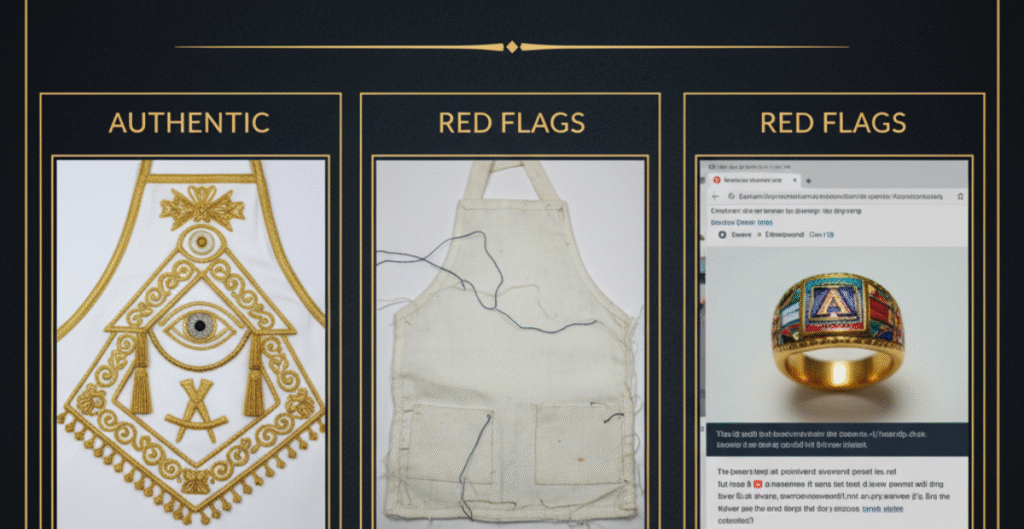
Authentic regalia comes with hallmarks, certificates, or records. A true piece has quality stitching, correct symbols, and may include paperwork from the lodge. Some historic aprons carry receipts or photos of original use.
Red flags include poor stitching, wrong emblems, missing paperwork, or unrealistically low prices. Online sellers without clear images or returns are often risky.
Custom Orders and Personalization
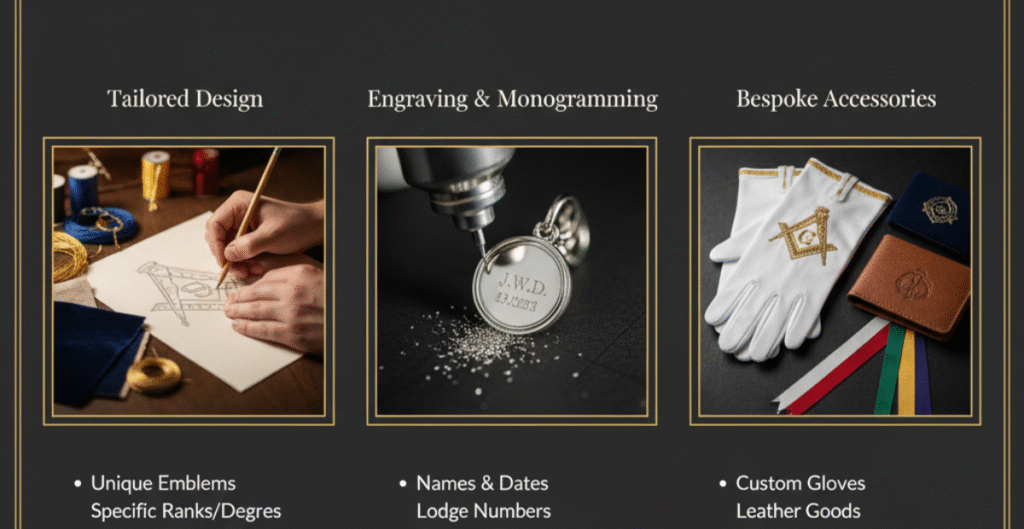
Custom regalia is common. A lodge may request its number or name embroidered on aprons. Jewels can be engraved with dates or honors. Colors can be matched to chapter traditions.
The process often includes design approval, deposit, sample proof, and production. Depending on complexity, lead times may range from weeks to months.
Pricing and Value
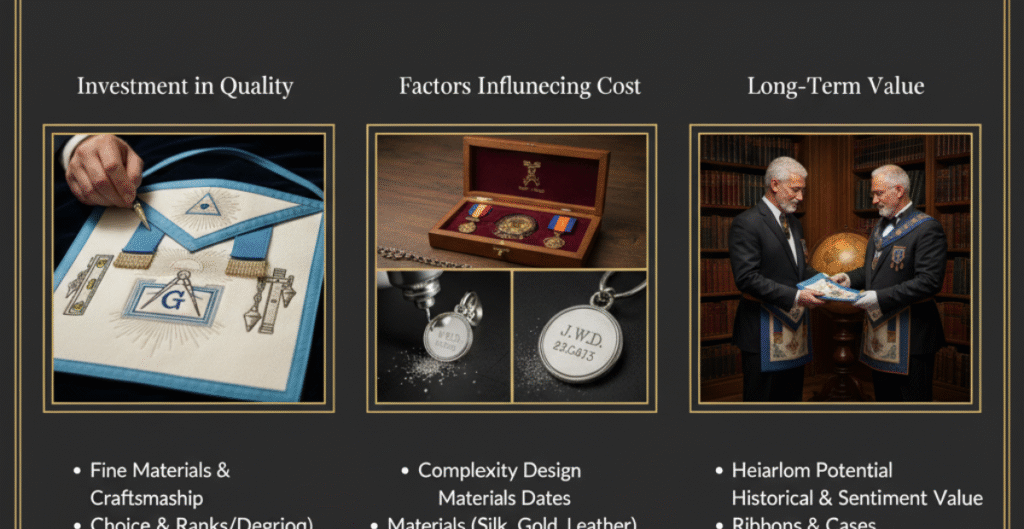
Prices vary greatly. Basic aprons may cost $75 to $200. Mid-range hand-finished sets can cost $300 to $900. Bespoke regalia with bullion embroidery may exceed $1,000.
Value depends on material, craftsmanship, and maker. A well-made apron may last decades, while cheap copies may wear out quickly.
Price Tiers for Masonic Regalia
| Tier | Price Range | Features | Lifespan Estimate |
| Economy | $75–$200 | Synthetic, machine stitching | 2–5 years |
| Mid-Range | $300–$900 | Hand-finished, quality materials | 10–20 years |
| Bespoke | $1,000+ | Custom, bullion, hallmarked | 25+ years |
Shipping and Customs

International shipping requires planning. Regalia may fall under textile or ceremonial goods. Customs may charge duties based on material or declared value.
Safe shipping uses padded cases and insurance. Buyers should confirm return policies, as cross-border returns can be difficult and costly.
Preservation and Care
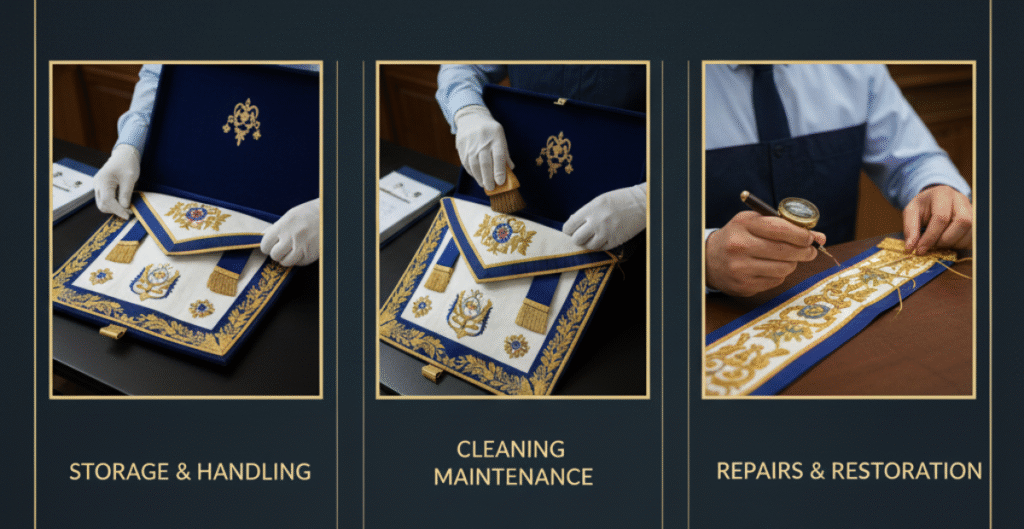
Regalia lasts longer when cared for correctly. Aprons and collars should be stored in breathable cases, not sealed plastic. Acid-free tissue prevents stains and creases.
Cleaning depends on material. Lambskin should be gently wiped, while silk or bullion embroidery should be left to specialists. Humidity and pests are real threats and must be monitored.
Do’s and Don’ts of Care
| Do | Don’t |
| Use acid-free tissue | Store long term in plastic |
| Air items in cool dry place | Expose to direct sunlight |
| Clean gently with soft cloth | Use harsh chemicals |
| Seek professional repair | Attempt DIY embroidery fixes |
Legal and Ethical Rules
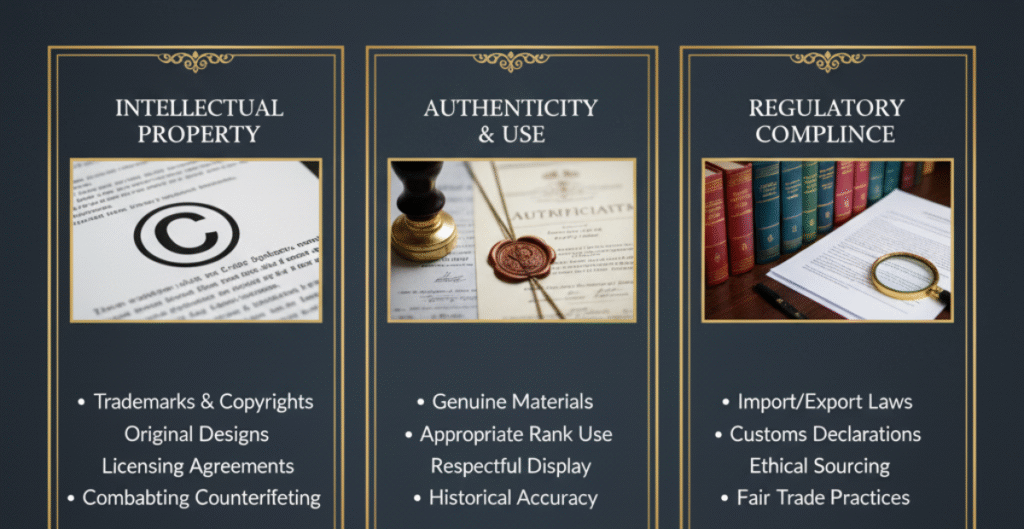
Not all regalia can be freely sold. Some countries restrict the sale of insignia. Some Grand Lodges also have strict rules about ownership and display.
Ethics also matter. Historical regalia tied to a lodge or family should not be traded without proper respect. Provenance must be checked to avoid disputes.
Buying Channels
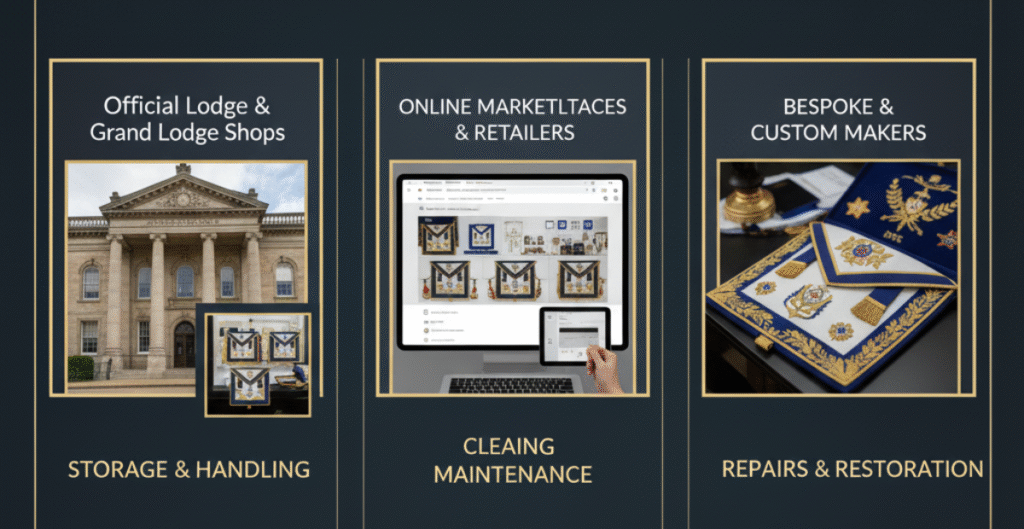
Regalia can be bought new, second-hand, or at auctions. New items are reliable but costly. Second-hand pieces may be cheaper but require careful checking.
Auctions often feature rare historic items, but buyers must confirm condition reports and provenance before bidding. Online marketplaces should be used only with trusted sellers.
Buying Checklist
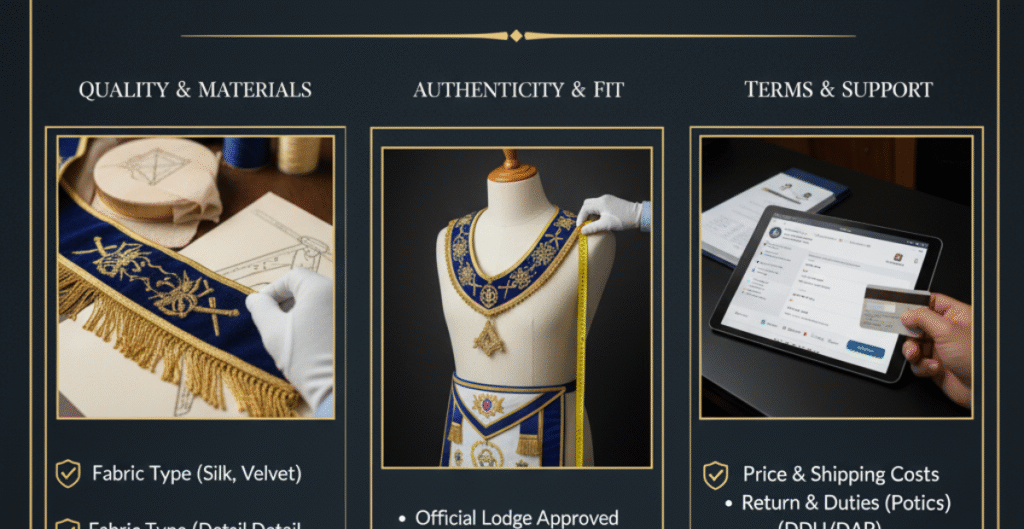
Every buyer should keep a checklist before purchasing regalia. Confirm seller details, check hallmarks, review measurements, inspect stitching, and request photos. Always ask for paperwork, warranty, and shipping details.
This approach prevents costly mistakes and ensures you receive authentic regalia fit for use or collection.
YOU WILL LIKE: Shriner Fez Case: Complete Guide to Choosing and Caring for Your Fez Case
Resources and Further Reading
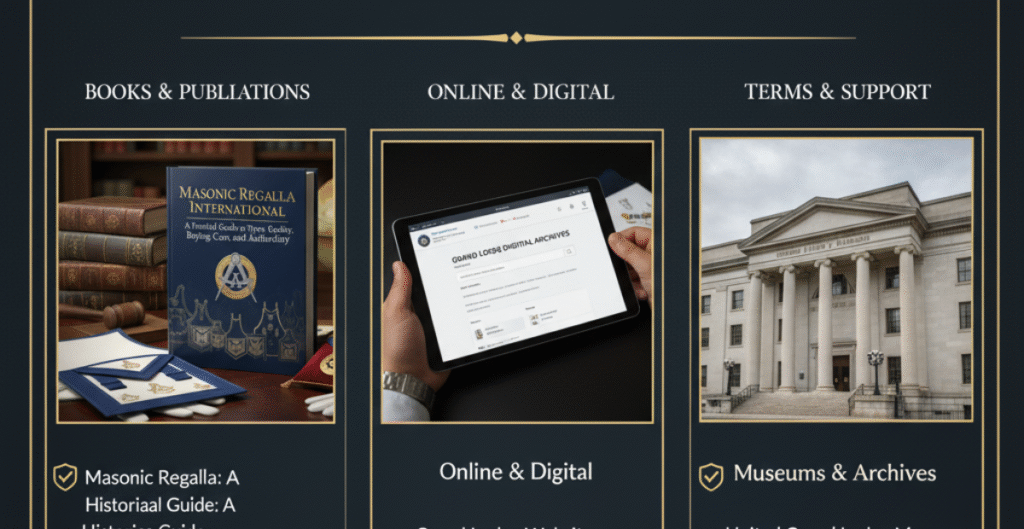
Lodges often publish official guides on dress and protocol. Many Grand Lodges list approved suppliers. Collectors can also use directories of historic makers.
For care and preservation, museum guides on textiles offer practical advice. Trusted auction houses publish catalogs that show authentic regalia examples.
Suggested Images and Media
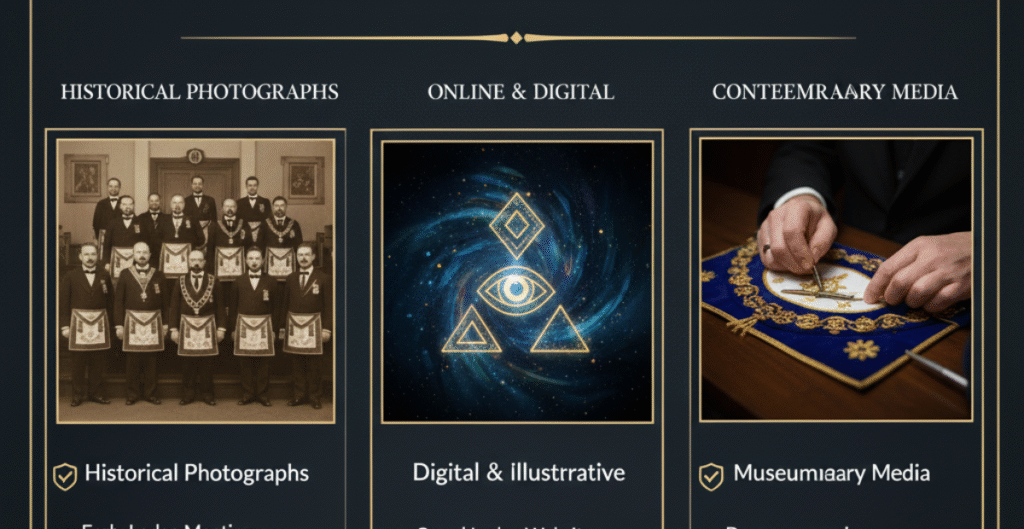
Useful images include close-ups of bullion embroidery, apron backs, hallmark stamps, and certificates of authenticity. Infographics showing regional regalia styles and sizing charts also help readers.
Images should always include alt text for accessibility and better indexing by search engines.
FAQ”s
Can a new Mason buy regalia?
Yes, but rules depend on the lodge. Some lodges provide the first apron, while others require the member to buy.
How can I spot fake regalia?
Check stitching, symbols, materials, and paperwork. Authentic items often have hallmarks or maker marks.
Can regalia be resized?
Yes, gloves and collars can be resized. Aprons can be adjusted but only by skilled craftsmen.
Is bullion thread easy to repair?
Bullion requires expert repair. Attempting to fix it yourself often causes damage.
Can regalia be shipped across borders?
Yes, but customs may apply duties. Always use insured shipping and correct declarations.
Conclusion
Masonic Regalia International: A Practical Guide to Types, Quality, Buying, Care, and Authenticity is both a tradition and a practical market. Regalia carries deep meaning, shows respect for ceremonies, and connects members across the world. Buying and caring for these items requires knowledge, careful choices, and respect for authenticity. With the right supplier, proper care, and understanding of customs, regalia can last for generations and continue to honor the spirit of Freemasonry.




